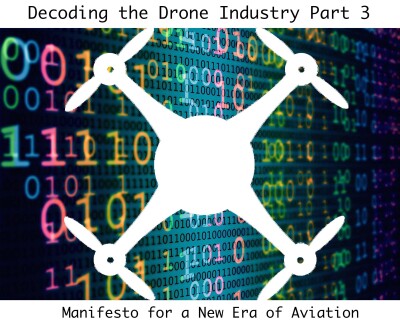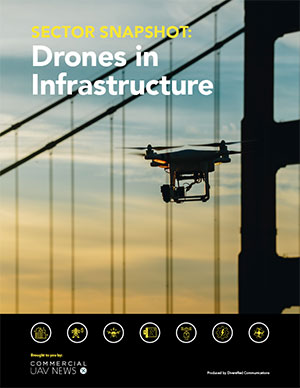In 1903 when the Wright Brothers flew their flying machine in Kitty Hawk, North Carolina, all components used in the manufacturing of the successful prototype were predictably American or in the case of the wood, perhaps Canadian.
In those days global trade was in its infancy, the Panama Canal was still a decade away from completion and the high cost of the scarce transportation available at the time, favored local and native industries in a country that had enormous natural resources and a seriously entrepreneurial population. The American century was just beginning.
The fabric used for the wings was soft cotton known as "Pride of the West", a type used for women's underwear. The engine was manufactured from scratch by one of Wright’s employees, Charlie Taylor. Everything else, including nails, wires, paint and grease, probably came from the local hardware store and was procured from local manufacturers.
Today this is hardly possible, not only for reasons of time and money, but also the speed of technology and the economic feasibility of a business model based on isolation and the reliance on complex research and development of new products.
Businesses in the 21st century rely on a global interdependency that has been created over the past five or six decades and which has become highly dependable and efficient. When Japanese car manufacturers invented the Just-in-Time (JIT) inventory manufacturing process in the late 1980’s, they were able to reduce the prices of their vehicles to a point where they forced the entire manufacturing community to adopt it, and that created a chain of suppliers and a transportation infrastructure that today is highly reliable.
Unfortunately, there is also the reality that this supply chain is highly diversified geographically and not every country involved has the same political inclination or governance philosophy. This is bound to create frictions that are not business-related and therefore the imposition of different types of penalties, such as political negotiating tools, is inevitable.
The new administration in the U.S. is a firm believer that tariffs are the answer to the ballooning trade deficit and a way to reduce taxes and create wealth. We might agree or disagree with this economic theory, but the fact remains that this is the new reality facing the business community and that everyone has a choice, either adhere to them, temporarily close while waiting for clarification or begin plans to move to another country with their business.
In the case of the uncrewed aviation industry tariffs are affecting different players in radically different ways.
1. Price Increases of existing aircraft: Tariffs are driving up the cost of drones and accessories imported from China, particularly affecting market leader DJI. Drone distributors and resellers which rely on Chinese brands to make a living are seeing their business model evaporates with prices rising in the 100% plus and that sudden hike will have a profound impact on their sales. Consumers may face higher prices for popular models and essential accessories and that will have an impact on the growth of the industry as a whole. Keep in mind that the price that consumers will pay for a drone today is the replacement cost, not the actual cost of the unit being sold. This is a counterintuitive economic reality but one that needs to be taken into account. If a DJI distributor in the U.S. has to pay 145% more for a specific model to replace the one being sold, the price of the unit currently in the shelf will have to go up in order to cover the cost of the new unit being manufactured in China.
2. Supply Chain Disruptions: Many U.S. drone manufacturers rely on Chinese-made components like motors, sensors, and rare earth materials. China's reciprocal tariffs and export controls on these materials are causing delays and increasing production costs. Banks, venture capital, angel investors and everyone else with cash to invest is now placing these allocations on ice while the situation matures, and the fluidity thickens a little. Some people are of the opinion that these tariffs are a negotiating tool and therefore, planning long-term based on them is a fools’ errand.
3. Shift in Manufacturing: Some companies are exploring alternative production hubs in countries like Vietnam or Mexico to bypass steeper tariffs for China, specifically. However, these transitions take time and may not immediately resolve supply chain challenges. New manufacturing facilities are difficult to build and take a long time to erect and retool, therefore any investment in the next few months is out of the question. The best thing right now, it seems, is to plan a new factory in the U.S., but immigration policies are placing a huge question mark around the availability of future workers to fulfill the tens or hundreds of jobs that would be required to be hired and trained.
4. Impact on Service Providers: Service providers are struggling to maintain competitive pricing due to increased costs in their hardware. Some are raising prices or adjusting their business models to survive. The industry was heading towards a healthy normalization of pricing around the most basic drone services, such as inspections of roofs, bridges and telecommunications and electric infrastructure. Now with the uncertainty around pricing of the aircraft, companies are re-evaluating their service pricing models and preparing for the uncertainty of the market. It is also possible that customers place their inspections on hold while the overall economic feel improves.
5. Market Dynamics: While tariffs might seem like an opportunity for U.S.-based manufacturers to gain market share, the reliance on Chinese components complicates their ability to compete effectively. This should open the door for American investment to create new industries based on the need of the drone community for components and minerals that are currently imported, but again, the economic uncertainty has dried up the investment for now.
6. Geopolitical Tensions: Trade policies are intensifying geopolitical challenges, with both the U.S. and China imposing restrictions on each other that affect the availability of drones and components. This came at the worst possible time, as the Federal Aviation Administration (FAA) prepares its much-anticipated NPRM (Notice of proposed rulemaking) for Part 108 and uncrewed flights beyond visual line of sight (BVLOS). At a time when drones could fly across borders and for hours under the new ruling, countries through ICAO (International Civil Aviation Organization) should be getting ready to cooperate on international rules to manage this exchange, but now with tensions to the north and south of the border, this cooperation seems far.
All these factors are creating uncertainty not only in the drone industry, but in the business community as a whole and influencing everything from pricing to production strategies.
At a time when technology was ready to start a preliminary integration of crewed and uncrewed aviation in the National Airspace System (NAS) in preparation for Part 108, these tariffs and the trade war that followed came to place a proverbial ‘poke-in-the-wheel’ of an industry that is bound to change the way we do business.















Comments